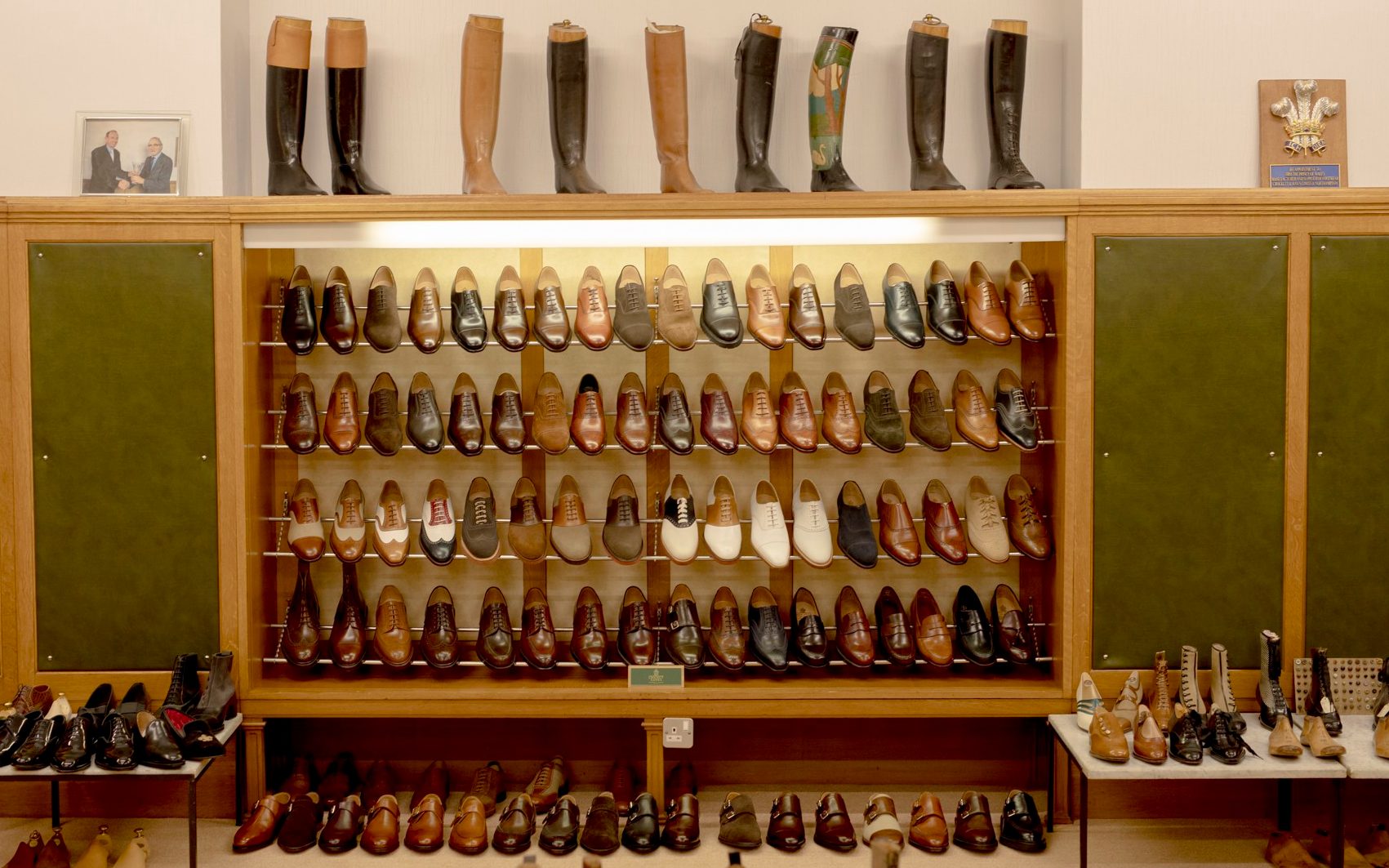
INSIDE THE HISTORIC FACTORY OF THE KING’S FAVOURITE SHOEMAKER
You could be forgiven for thinking that Crockett & Jones is like any other British heritage brand. After all, it has much in common with Savile Row’s oldest tailors, or Jermyn Street’s traditional shirtmakers. There’s the Victorian founding date (established in Northampton in 1879), the royal warrant the company’s held since 2017, and the regular patronage of King Charles III (he owns several pairs, including Connaught lace-ups and Cavendish tassel loafers). Then there’s the four-storey red-brick factory that’s been home to the shoemaker since 1891, filled with decades-old machines that click-clack away like typewriters. James Bond, that noted consumer, wears the shoes. Daniel Craig is, apparently, ‘still coming into the stores, even post-James Bond’, says head of marketing James Fox, proudly.
This old-school image, though, does Northampton’s largest Goodyear-welted shoemaker a disservice. Today the factory turns out between 2,500 and 2,700 pairs of shoes per week, with 300 craftspeople on the books and 13 retail stores across Britain, Europe and America. By heritage brand standards, it’s a behemoth.
‘We’ve doubled our production since 2010,’ says Fox, who started work there and married into the Jones family that same year. Today he works alongside his wife, Philippa, who is the export sales manager; her brother, William, the UK sales manager; and Jonathan, their father, the company’s managing director. Jones Senior has been here for 47 years, the fourth generation of the family to run the business.
New for the spring/summer 2024 season is the Falmouth boat shoe, a lightweight, softly constructed design in suede or waxed calf leather, finished with new wedge-shaped flexible rubber soles. The story goes that in 1935 a Connecticut sailor, Paul A Sperry, was having trouble maintaining his footing on the deck of his yacht. His solution was to cut grooves into the soles of his shoes to enhance their grip. Paul Newman and JFK were both keen on theirs.
Critically, like any other pair of Crockett shoes, the Falmouth is made with a Goodyear-welted construction. Perfected by American engineer Charles Goodyear Jr in 1869, this is a process whereby a sturdy leather welt, or strip, is attached around the outer edge of a shoe. The sole is then sewn directly to the welt, which means that Goodyear-welted shoes can easily be resoled with no damage to the shoe itself, extending its lifespan for up to 40 years of regular wear.
‘Our shoes can be resoled at least three to four times,’ Fox explains. In fact, there’s an entire repairs department in the Northampton factory. Customers can drop old shoes into a Crockett & Jones store when they’re in need of refurbishment, and they’ll be sent on to the factory to be resoled, polished and reconditioned. ‘Some customers send us shoes for repair that are many decades old.’
Falmouth is the latest in a line of newer designs geared towards comfort rather than formality. It’s a response to the long-running ‘casualisation’ of men’s style, the decline of traditional business dress and the flattening of demand for office shoes. The Superflex collection is finished with specially treated leather soles that have significantly more give than conventional Goodyear-welted shoes and mould to the wearer’s foot. Softer and more casual materials such as wax calf or rough-out suede (oiled for a rustic look and better water-proofing) also appeal to modern tastes.
Every pair of shoes will take about three months to progress through the factory from start to finish, undergoing more than 250 processes in all. Leathers and suedes are supplied by specialist tanneries in Europe and the USA, the identities of which are closely guarded secrets. First, the leather will be hand cut, or ‘clicked’, in the factory’s clicking room. (‘Room’, by the way, is an understatement, as every department is a cavernous, high-ceilinged workshop that takes up a whole floor of the factory.) Then the shoe’s uppers, made from separate panels of leather, are sewn together in the closing room.
The uppers will then be ‘lasted’ – left to sit on contoured plastic moulds that give the shoes their shape – for four weeks. ‘Leather has a memory,’ Fox says, so these weeks mean the shoes hold their shape over time. Then, soles are attached to the uppers in the making room, and in the finishing room the soles’ edges are sealed with tar, before a final polish and quality check. Charlie McKenzie, who heads up the finishing room, is the factory’s longest serving member of staff. He’s been with Crockett & Jones for 54 years.
It’s not all about old hands, though. ‘We continue to have a lot of young faces in the factory,’ says Fox. At any one time, there are between eight and 10 apprentices on a two-year course that will see them work in every department, from clicking to finishing. ‘I think it shows,’ Fox adds. ‘Thanks to the scheme, we are making shoes just as we were 10 or 15 years ago – the skills we need aren’t dying out.’
Fox attributes the company’s sustained success to family ownership and the security that a long-term, inter-generational perspective brings. The other key, he says, is to listen to customers. ‘We don’t get dictated to by creative directorship; there is no ego in this company,’ he says.
2024-04-16T11:02:30Z dg43tfdfdgfd